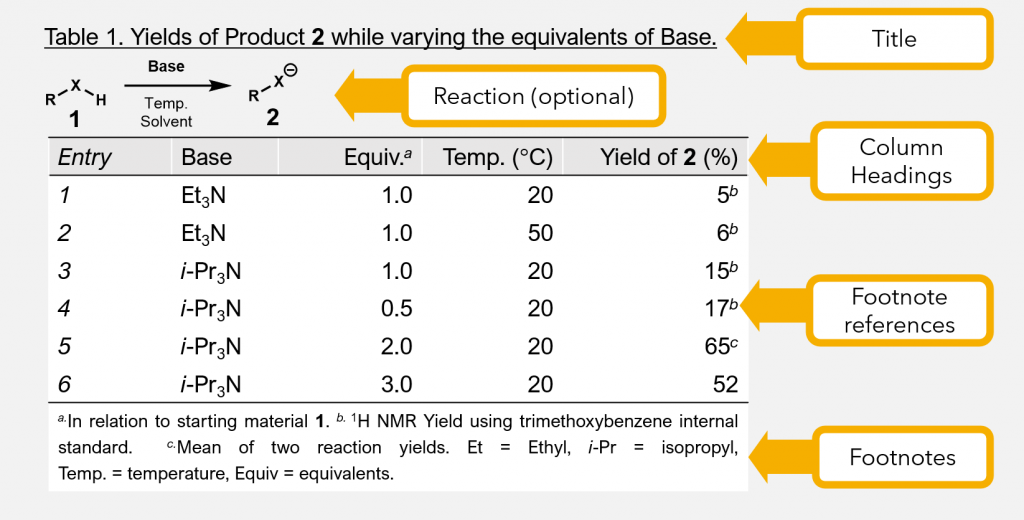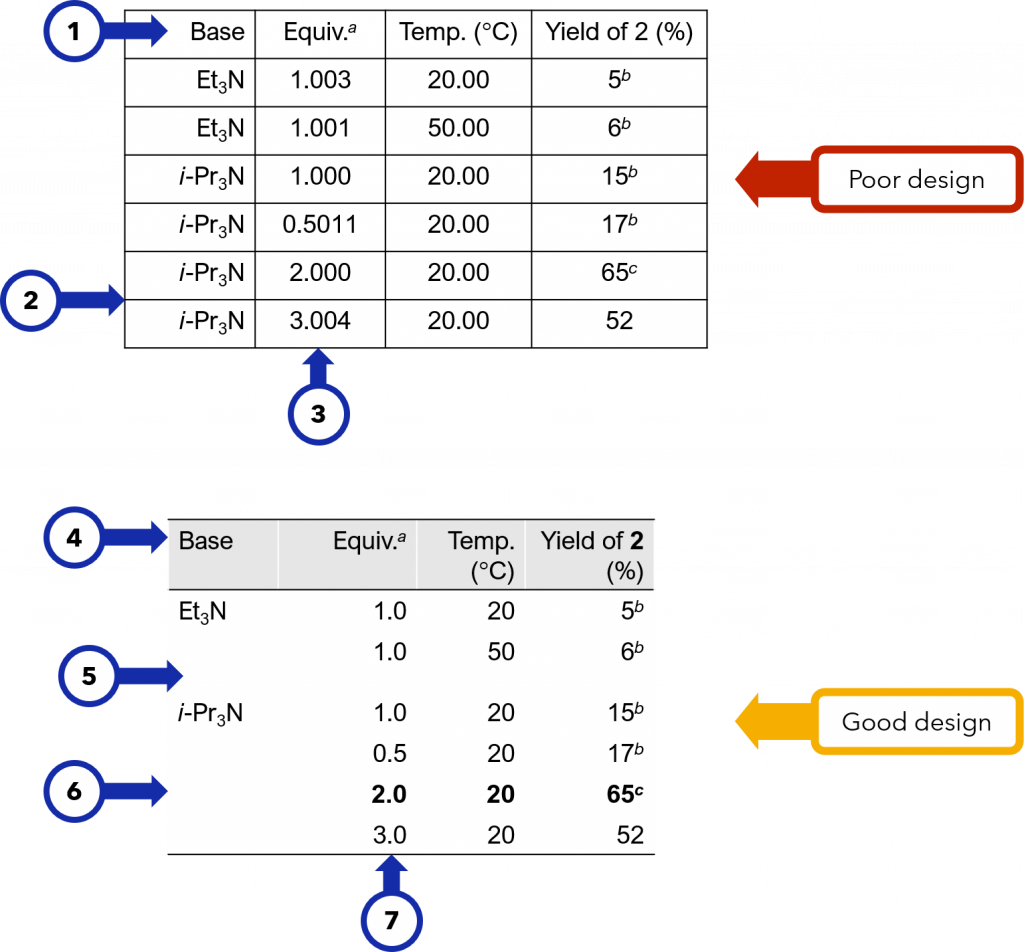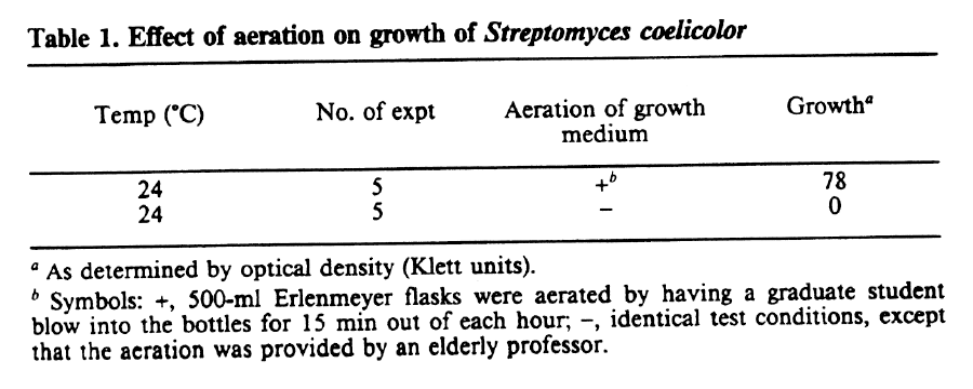11 Tables
Read time: 2 minutes
Overview
This chapter discusses the use of tables to show data in science with a focus on the field of chemistry.
Sections in this chapter
Tables in science
As we saw in the flow chart introducing this module, a table is a good option for presenting a large amount of data and when all of the details and exact values are important. If the data is important but too large for the body of an article, it is included in an Appendix or Supplementary Materials. Figure 11.1 shows the format of a typical figure in a chemistry article or thesis.

Tables can supplement text and present numbers in a way that conveys meaningful relationships. They should be simple, concise, and use abbreviations or symbols in a way that is consistent with the text. Tables should have at least 3 columns and 4-5 rows, otherwise, the data might be better represented as text.
The title of a table should describe the contents without the reader having to refer to the text (this is where including a reaction diagram subtitle can be useful). Details that don’t fit in the table can be included in the footnotes.
Column headings should be limited to two lines and can use abbreviations or symbols, but make sure the units are shown in full.
Table Design
Tables aren’t just cells of rows and columns, they can be designed to help the reader follow and find the most important information. Jon Schwabish published a brilliant guide to better table design (Twitter thread, Article). Let’s see how his data principles were used to create the table above, as outlined in Figure 11.2.

- Left-align text
- Only use borders when necessary
- Use the right level of precision
- Make your header row stand out
- remove repetitive data and use white space
- Highlight important results or outliers
- Right-align numbers and always align decimals.


